ASRock Z97 Extreme6 Review: Ultra M.2 x4 Tested With XP941
by Ian Cutress on May 24, 2014 12:00 PM ESTASRock Z97 Extreme6 Software
For the most part, ASRock’s Z97 software mirrors that on the Z87, using the A-Tuning interface for pretty much everything and the combination light grey/green tones that contrast to the software from some of the other motherboard manufacturers. Actually the newest part of the package is ASRock’s own application interface, the App Shop. This is essentially a Google Play Store / App Store for ASRock to put in their own choice software, updates to their software, or perhaps a few sponsored items. As shown in the screenshot below, we get several of the standard ASRock software installations as well as Chrome and a few APAC based FTP games:
This sets a somewhat worrying precedent in case other manufacturers might do the same. It might not be all bad, given that these are simply PC game installation files to be downloaded, as if you went to the website of the company that made them. There does not seem to be any mechanism for buying applications, so at the minute everything posted on the ASRock App Shop is free.
The App Shop does also offer a system update feature for BIOS and drivers, although it offered none when I attempted to use it:
A-Tuning
However everything else from ASRock is tunneled through their A-Tuning interface. This is relatively similar to our previous ASRock Z87 reviews where the first screen we come to is the Operation Mode:
The default position is Standard Mode that will run the CPU as per normal. The Power Saving mode will reduce the CPU to 800 MHz and will slowly ramp the speed up as more performance is needed. It will require a good 10 seconds of full throttle to get to full speed. Performance mode disables any idle states, but also opens up another menu for more options.
The EZ OC options are similar to those in the BIOS, and Auto Tuning at the bottom will perform a series of overclocking tests to determine an overclock for the system. For us it gave our i7-4770K a 4.3 GHz overclock at 1.278 volts.
The next tab along is the Tools tab, which similarly to the Tools tab in the BIOS is the main hub for all the extra ASRock options.
XFast RAM
A common theme with almost all motherboard manufacturers is to include some form of RAMDisk software with the motherboard, often negating any pay software currently on the market. The ASRock tool allows users to recover a RAMDisk on boot and allow the RAMDisk to act as a temporary file store, or a regular file store as needed.
XFast LAN
Another theme in motherboard software is to implement some form of network packet prioritization, allowing users to select which programs have network priority (e.g. VOIP over games, games over downloads). Most of these solutions use a custom front end to a cFos back end, as is the case with ASRock:
Fast Boot
With the new UEFI system implementation, a motherboard can bypass some initialization procedures for devices that conform to UEFI specifications. This also requires a UEFI aware OS, such as Windows 8, to ‘instant’ boot, but other Windows operating systems can take advantage of some optimizations. For Instant Boot users, there is an option here to reboot the system straight into BIOS as well.
Online Management Guard (OMG)
The OMG tool from the BIOS is also available in the software, allowing users to restrict the times when the user can access online functions. In this implementation we also have a password protection system to prevent access.
FAN-Tastic Tuning
The fan controls for the Z97 Extreme6 use a fan test to provide the user with a power to speed look-up table to help design their fan response profiles. Unlike the BIOS, we cannot select the temperature sensor by which the fan header operates, but like the BIOS ASRock has confused the FAN Speed (%) in the graph with Fan Power in the look-up table. There needs to be some basic mathematics done here to do the conversion and make it physically accurate.
Dehumidifier
As with the BIOS, the Dehumidifier option in the software allows users to keep fans running after a shutdown for a fixed length of time.
USB Key
In some environments, logging into a machine requires a USB key to identify the user. ASRock’s USB Key does the same thing, allowing the user to assign their profile to a specific USB device such that when it is plugged into the machine, it automatically logs the user in. Just remember to take the USB stick with you when not in use, or make sure that pesky housemate #2 does not get hold of it.
DISK Health Report
I know my early generation Samsung PB22-J 64GB in my netbook is throwing up errors at boot time about SSD life. In order to help diagnose these issues, I need to download and obtain software that reports the flags in the device. ASRock has now added this to the software bundle to bypass the online hunt.
This software also shows total host reads and writes along with power on counts and time lengths. Shown above it says my boot SSD has been powered on 1348 times, which makes sense for a test bed SSD!
OC Tweaker
For manual OS overclocking we have the OC Tweaker tool which emulates the OC Tweaker menu in the BIOS. All the options are in one big long line; however there is now a pullout section on the right hand side regarding CPU frequencies to show the current state of the system.
System Browser
Similar to the BIOS tool, the System Browser lets the user see what is installed into the system. Should a stick of memory, for whatever reason, stop working users can see it with this software.
Live Update
Alongside the updating tool in the App Shop, ASRock has a tool in A-Tuning to do the same thing. Here we can select which server to go for as well to get the best connection speed. One feature I want to ASRock add is to display the size of the update before downloading, in case the software is large and my bandwidth limit is small.


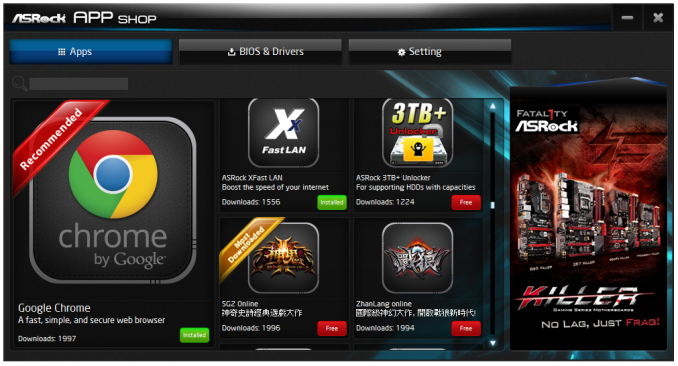
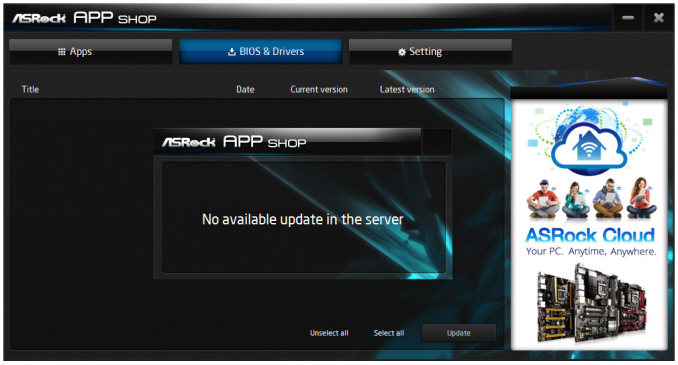
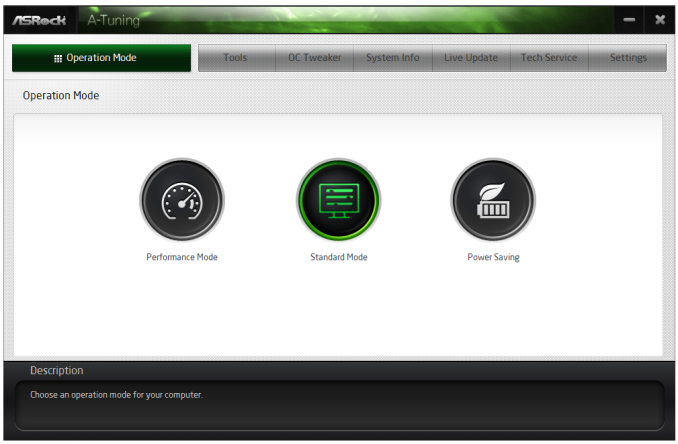
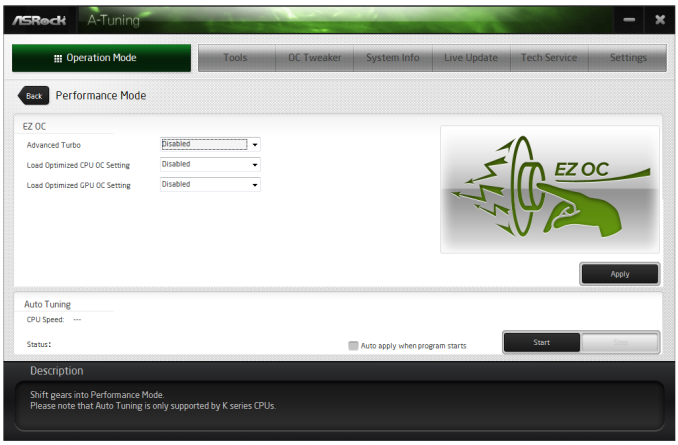
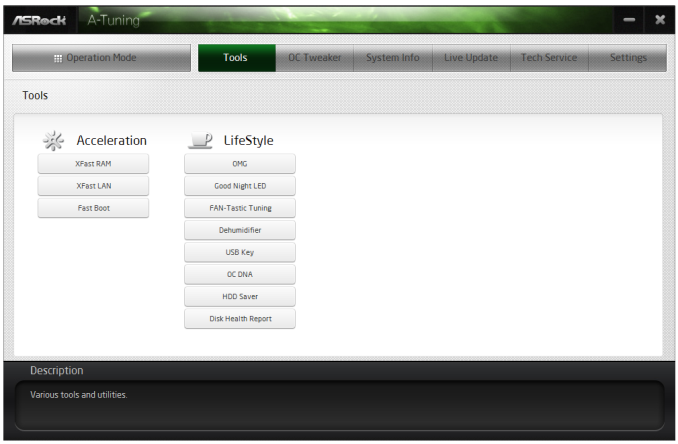
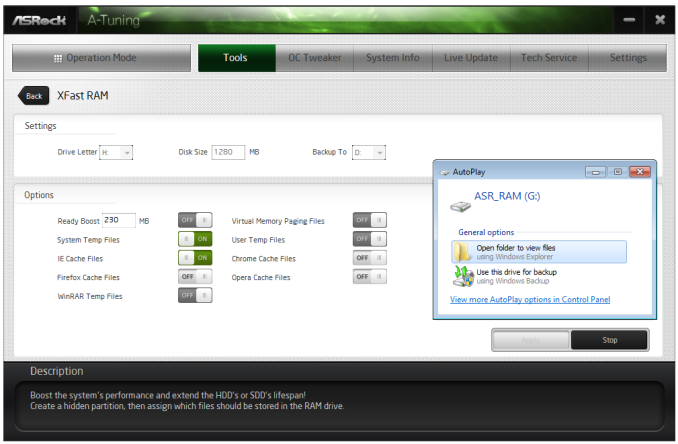
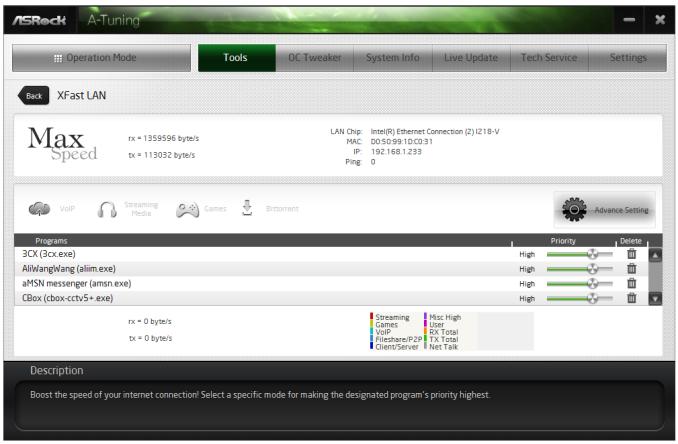
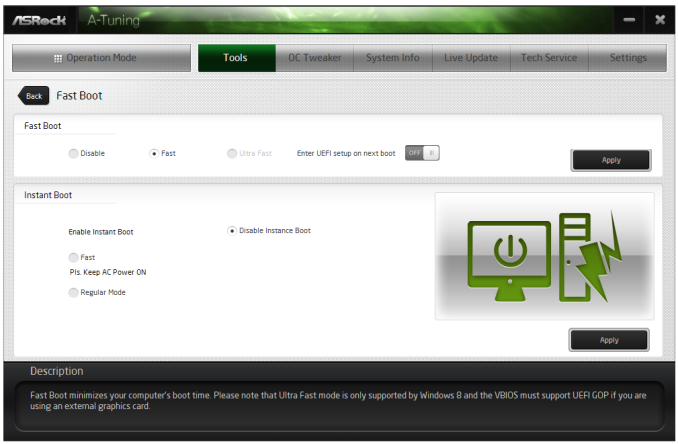
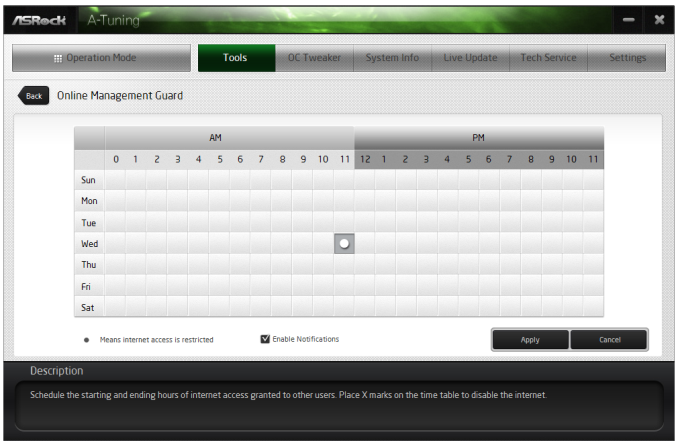
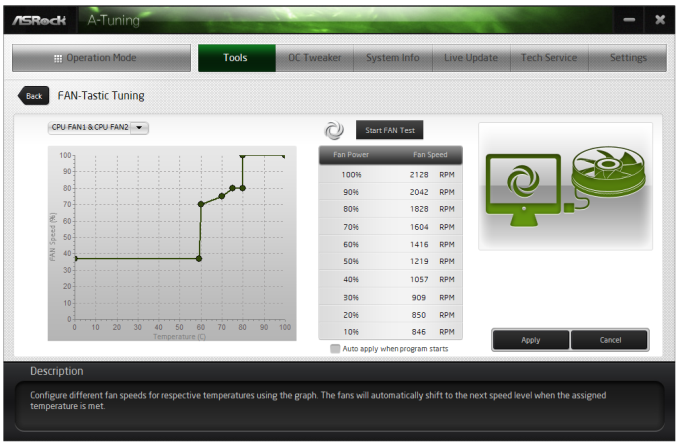
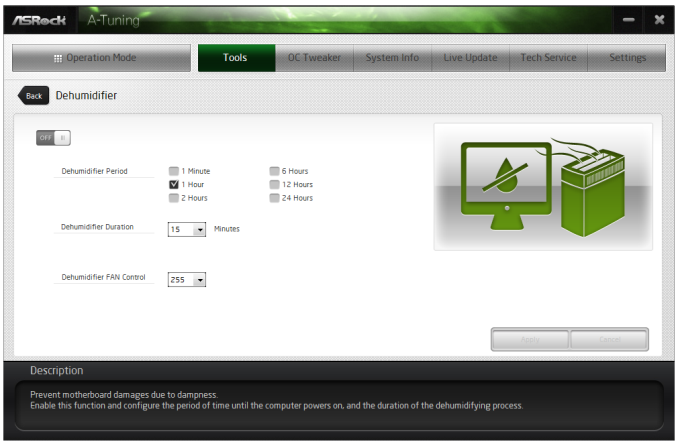

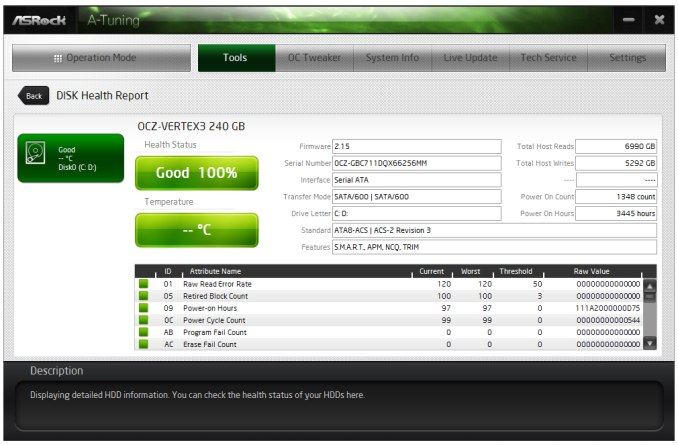
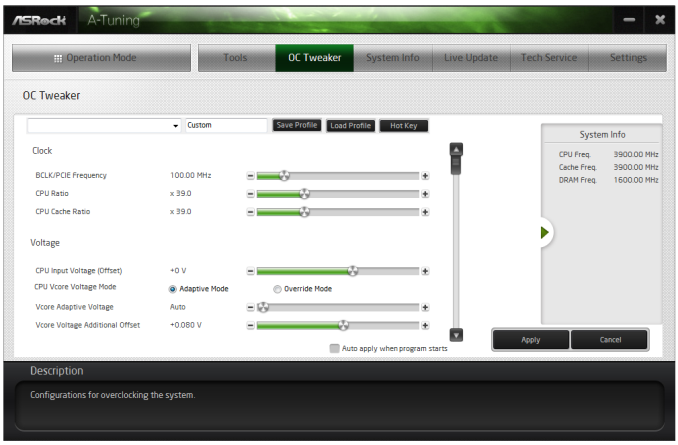
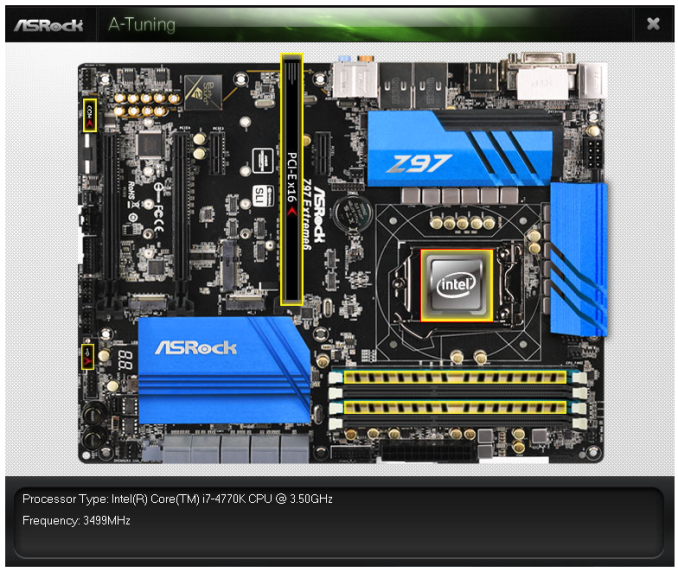
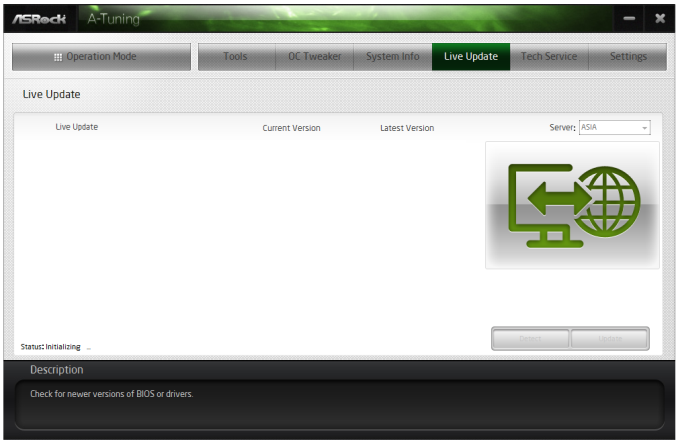














43 Comments
View All Comments
peterfares - Saturday, May 24, 2014 - link
It was stated in the article, using 4 lanes for M.2 from the chipset would leave too little lanes left for controllers and other onboard peripheral devices.SirKnobsworth - Sunday, May 25, 2014 - link
The chipset allows up to 8 PCIe lanes. Maybe having 8 USB 3 ports and 10 SATA ports matters for some, but certainly not everyone. If you use 4 lanes for M.2 you can still have 4 additional lanes going to the NIC/x1 slots/whatever, 4 USB 3.0 ports, and 6 SATA ports, noting that FlexIO allows some flexibility in that arrangement.Galatian - Sunday, May 25, 2014 - link
This! Thousand times this! I mean at least give the option. My PC if only a gaming machine. I have one SSD inside, one mouse, one keyboard and one XBox Controller receiver. I have no need for more ports. At least give me some option: as I said it's either this extreme or the other extreme, but nothing in between.isa - Sunday, May 25, 2014 - link
But the article also said a reason was m.2 cards would mostly or only be offered in 2 channel flavors, and that makes no sense to me since I believe the z97 chipset supports 4 channels of PCIe 2.0 for m.2. I agree many would want 4 channels even if meant sacrificing a few usb ports or whatever, so I'd think the market would provide 4 channel m.2 cards to support those customers.Luke_Higdon - Sunday, April 10, 2016 - link
Question: "Can you explain to me why no mainboard manufacturer is using 4 lanes from the chipsets PCIe 2.0? I mean that would be enough for the Samsung SSD and still has room left."Answer: No It would run at a third the speed.
Question: I mean what do I gain from all those SATA and USB ports? Who is actually using all of them?
Answer: Lots of people including me. I have 6 hard drives a CD player. Plus they are very cheap to make so if you buy an upgraded motherboard this is the least they could do. I understand most people don't need all of that but that is why you would buy a cheaper Motherboard. However most people have 2 hard drives and a DVD player and it is used for adapters and if you are doing RAID it could need double the amount of SATA ports or triple.
Statement: Right now I have to choose between either a slow M.2 slot because they only allocate 2 lanes or I can go with ASRock which feels like overkill and takes away CPU PCIe lanes.
Answer: ASrock doesn't take away PCIe lanes. CPU's are given a fixed amount of PCIe lanes typically 16. If you have a video card it takes 8 and you are left with 8 in which 4 are taken from the 950 pro. If you dont play video games and use integrated graphics from a motherboard then you can buy any motherboard that uses 3.0 PCIe for at least one slot which is most of them.
Marlowe - Saturday, May 24, 2014 - link
All new motherboards should have pcie x4 m.2 slots to be worthwile.. There are really no excuse not to. The x2 version is a too small upgrade from old SATA. Anyone who buys a new fast pcie ssd will need x4 to fully utilize it.I think you can install both Win 7 and Win 8 in UEFI mode.
SirKnobsworth - Sunday, May 25, 2014 - link
A few thoughts:- The SSD only supports PCIe 2.0, not 3.0, so the maximum theoretical bandwidth is 20 rather than 32 gbps. The actual performance is still far below that too though. To my knowledge there are not PCIe SSDs currently available that support gen 3, though I think OCZ will be shipping 2.0x8 SSDs soon.
- Leaked roadmaps show that Intel will be increasing the number of PCIe lanes on the chipset rather than the processor - the chipsets accompanying Skylake should have 20 PCIe 3.0 lanes. If you want more lanes directly from the CPU then there's already an option - Intel's LGA2011 Enthusiast options have 40 PCIe 3.0 lanes from the CPU.
ShieTar - Monday, May 26, 2014 - link
Also, if the x2 port maxes out at 765 MBps of just below 6 Gbps, than we probably should not expect more than roughly 12 Gbps from the x4 port either. So the XP941 would be significantly closer to the interface maximum than the article suggests.Laststop311 - Thursday, May 29, 2014 - link
A lot of people want to build mini itx form factor. LGA 2011 doesn;t exist and never will it's physically too large a socket. All the people like me have a great need for increased pci-e lanes from the cpu. Controllers degrade performance and add latency.At the same time for mini itx you can only fit one pci-e slot on there but it would be nice if we could keep it at 16x for when gpu's do start needing the extra bandwidth and still have 8x left over for 2 4x m2 slots. 24x pci-e 3.0 cpu lanes needs to be on their mainstream. That still leaves a whole 16x gap to the enthusiast and they can increase those by 8 too to 48 lanes and keep the separation the same. Then everyone can be happy.
romrunning - Thursday, May 29, 2014 - link
I will add my vote to wanting a mini-ITX board. To me, I really don't know anyone who is actually using 3 PCIe slots. However, I do know quite a few who are tired of the big towers.Also, where are these people who want a ton of SATA slots in a home PC?? The only chassis I know where I want that many ports is in a server, and there I'm getting space for 16-24 drives - not this Frankenstein of 10 SATA slots. People at home who need a lot of space (for work or pleasure) are getting a NAS, not trying to load out a machine with 6-10 drives.
My picture of a great mini-ITX board - Z or H 9-series chipset, 4 x 6Gbps SATA ports supporting RAID 0/1/5/6, 2 x m.2 (x4) supporting RAID 0/1, no SATA Express (waste of space), 1x eSATA, 4-6 USB 3.0 ports, optional mSATA/PCIe slot for wireless add-on, and a single x16 PCIe 3.0 slot. Price it at $110-150, and I'd buy it in a heartbeat!